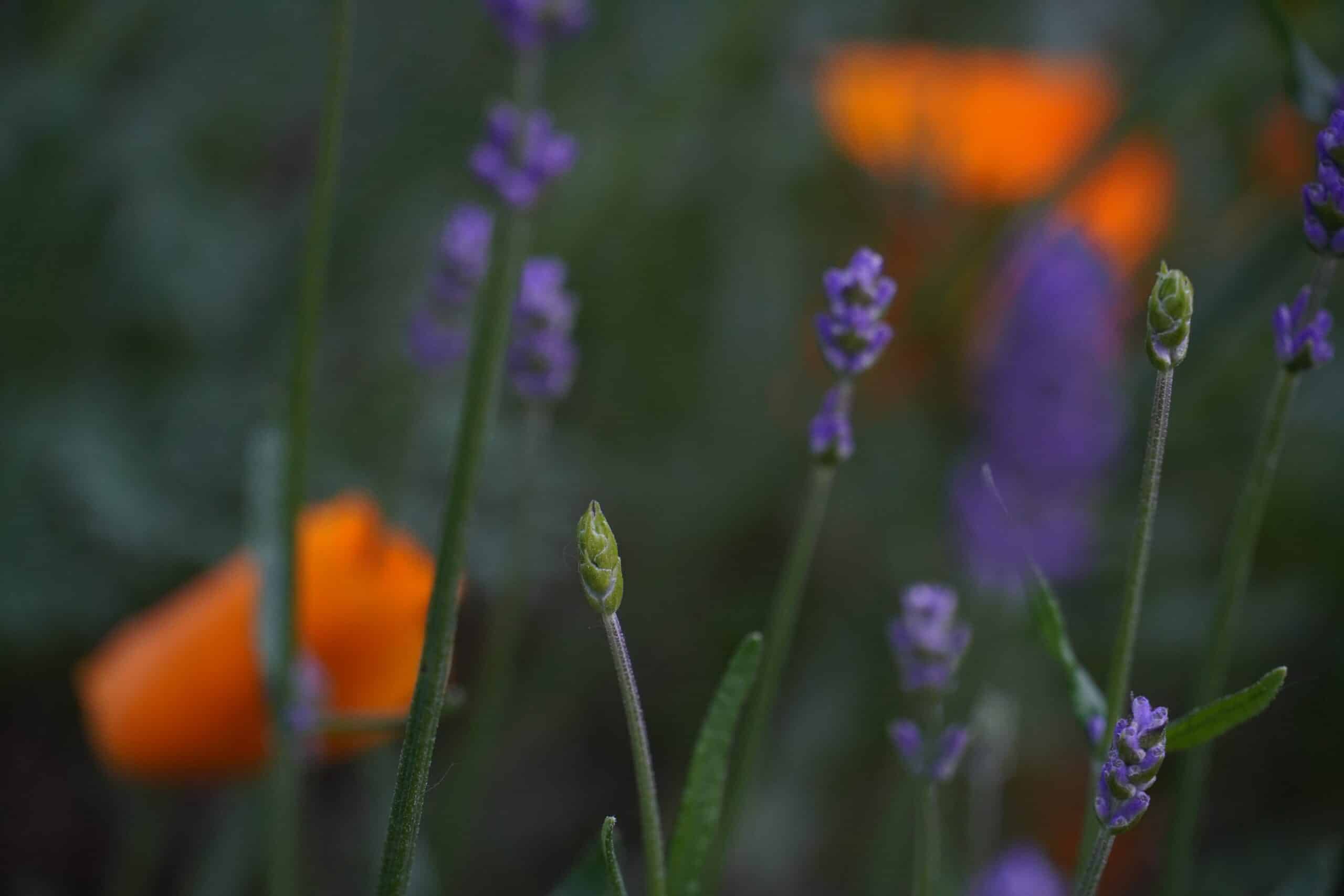Moonflowers are stunning nocturnal blooms that add a romantic touch to any nighttime garden. These mysterious flowers open at night, revealing their beautiful white petals, and close up again in the morning. Moonflowers have been cultivated for centuries and have long been associated with beauty, magic, and romance. If you’re looking for an exotic addition to your garden, moonflower vines are an excellent choice.
In this article, we’ll cover everything you need to know about growing and caring for moonflower vines. From tips on planting and watering to recommendations on soil types and pruning, you’ll learn how to cultivate these gorgeous flowers in containers or in the ground. We’ll also discuss potential pests and diseases that can affect your moonflowers so you can take steps to protect them from harm.
Ready to get started? Let us guide you through the process of growing vibrant moonflowers in your garden!
Selecting Suitable Containers For Moonflower
Choosing the right container for your moonflower is key. It should be a deep pot with drainage holes so excess water can escape. For bigger plants, choose something that’s at least 8-12 inches in diameter and 10-14 inches deep. If you plan on planting more than one plant, opt for a larger container to give each plant enough room to grow. Make sure the pot is made of a material that will allow for plenty of air circulation. Terra cotta and ceramic are both excellent choices.
When it comes to soil, it needs to be well-draining, nutrient-rich, and able to hold moisture without becoming soggy or waterlogged. You don’t necessarily need to buy special soil mixes; any good quality potting mix that contains peat moss, vermiculite or perlite will work just fine. You may also want to add some compost or manure if you’re planting in containers as they can be prone to drying out quickly.
By selecting the right type of container and preparing the soil properly, you’ll ensure your moonflower has plenty of space and nutrients to thrive in its new home! Now it’s time to move onto the next step: preparing the soil for your moonflower.
Preparing Soil For Moonflower
When it comes to growing any type of flower, starting with the right soil is essential. Preparing the soil for moonflower is no exception and requires careful thought and planning.
Think of the soil as a home for your moonflower; it needs to be comfortable and welcoming in order to encourage growth. To illustrate this, imagine sitting down in a favorite armchair: you’ll be relaxed, supported and have an overall feeling of contentment that will help you get through your day. Similarly, if the soil isn’t right for moonflowers, their growth won’t be optimal.
Moonflower prefers light, deep soils that are moist but also well-drained; they don’t do well in clay or waterlogged soils. In terms of pH balance, they prefer slightly acidic soils with a range of 5.5 – 6.5 being ideal. The best way to create this kind of soil is by adding compost or aged manure along with additional sand if necessary – this should give you the perfect blend for your moonflower’s needs.
With the right environment created, you can now move on to planting your moonflower from seed and nurturing it into maturity!
Planting Moonflower From Seed
When it comes to planting moonflower from seed, preparation is key. Firstly, choose a good quality seed-starting mix for the best results. This should be moistened and well drained before planting. It’s also important to remember that moonflower seeds need light to germinate, so scatter the seeds on top of the soil mix without covering them with soil. Once they’ve been planted, gently water them in and keep the soil moist but not wet.
Next, make sure your container is placed in an area where it will get full sunlight in order to encourage germination and growth. Moonflower needs six to eight hours of direct sun each day for optimal growth and flowering. Additionally, adding some organic fertilizer or compost can help maintain proper nutrition in the soil throughout the growing season.
Lastly, with consistent care and attention, your moonflowers should start blooming within 8-10 weeks after sowing the seeds. After blooming begins, deadheading spent flowers can help ensure continuous bloom throughout the season. With proper care, these beautiful flowers will bring stunning beauty to any outdoor space!
Planting Moonflower From Transplants
The number of varieties of moonflower is staggering – over 100 species are known to exist! Planting moonflower from transplants is an excellent way to bring this unique beauty into your garden or container.
Transplanting a moonflower is easier than growing it from seed and can be done any time during the summer months as long as there is no danger of frost. It’s important to choose certified disease-free plants, as they will have the best chance of success in their new home. When transplanting, make sure to give the plant plenty of space so its roots can spread out and establish quickly. The soil should be rich, well-draining, and slightly acidic.
Adding organic matter such as compost will help the soil retain moisture and provide nutrients for the plant’s development. After planting, water thoroughly and apply a layer of mulch around the base of the plant to reduce competition from weeds and help maintain an even temperature in the soil. With proper care and regular watering, your transplanted moonflower should bloom within four weeks or so!
Caring For Moonflower In Containers
If you had the chance to plant a little piece of the night sky, wouldn’t you take it? Moonflowers are a popular addition to any garden, and caring for them in containers is not as difficult as one might think. With some basic knowledge and care, these beautiful white blooms can bring a bit of starlight into your home.
When planting moonflower in containers, there are certain things to keep in mind. You’ll want to use a pot with plenty of drainage holes, as well as soil that is rich in organic matter. It’s also important to remember that moonflowers need lots of sunlight, so make sure your container gets adequate exposure each day.
Once planted, caring for moonflower doesn’t take much time or effort. They need regular watering during the growing season and should be fertilized every two weeks with a balanced fertilizer. Pruning may be necessary if they become too large or leggy, but otherwise they will remain relatively self-sufficient with minimal maintenance required.
With proper care and attention, these night-blooming beauties will provide an ethereal beauty all summer long.
Water Needs Of Moonflower
Serenely, caring for moonflower in containers requires the attention of a diligent gardener. Watering is essential to keeping the plant healthy and blooming. The sixth step to caring for these beautiful flowers is to understand their water needs.
Aromatically, moonflower benefits from consistent and moderate watering. It’s important not to overwater, as this can cause root rot or other fungal diseases. When it comes to frequency, aim to water two or three times a week during the hot summer months and once per week during cooler weather. Make sure that the soil is moist but not soggy, as too much moisture can cause the roots to rot.
Nurturing moonflower involves monitoring its moisture content carefully. Its water needs should be adjusted according to temperature and amount of sunshine received each day. If the soil feels dry an inch below the surface, it’s time to give your plants a good drink of water; conversely, if the soil feels damp or wet, you should hold off on watering until it has dried out slightly. As such, checking for moisture levels regularly is key for keeping your moonflower happy and healthy. With proper care and attention, your containerized moonflowers will provide beauty throughout all seasons! Eagerly anticipating further growth in your garden? Next up: fertilizing moonflower!
Fertilizing Moonflower
Moonflower is a beautiful and fragrant plant that can be grown in containers with the right care. It is an important flower for pollinators, as it produces nectar overnight from dusk until dawn; on average, each bloom produces 2 milligrams of nectar per hour. Therefore, providing adequate fertilization for moonflower is essential for healthy growth and blooms.
Fertilizing moonflower can help to ensure that the soil has the necessary nutrients to sustain healthy growth. A balanced fertilizer should be applied at least twice during the growing season. If containers are used, a slow-release fertilizer should be applied according to package instructions. Additionally, when planting in ground soil, a low nitrogen fertilizer should be used to avoid excessive foliage growth at the expense of blooms.
Organic matter such as compost and aged manure can also be beneficial when added to the soil prior to planting or sprinkled around plants during their active growing season. Moonflower responds well to regular and moderate doses of fertilizer; however, too much nitrogen will cause them to produce more leaves than flowers. With proper fertilization, moonflower plants can thrive with minimal maintenance and provide a stunning backdrop for your garden or patio area.
Pruning Moonflower
Pruning moonflower is an important part of caring for the plant. Just like any other plant, regular pruning helps keep it healthy and encourages a fuller, bushier habit. It also helps to improve the overall look and shape of your moonflower. Additionally, pruning will help with controlling pests and diseases that might affect your plant’s health.
Before you get started on pruning your moonflower, it is important to equip yourself with the right tools. Make sure that you have a pair of sharp scissors or garden shears handy so that you can do a thorough job without damaging the stems or leaves. You will also want to wear gloves to protect yourself from any prickles that may be present on the stems or leaves of your plant.
It’s also essential to understand when and how much to prune your moonflower. Pruning should be done during late winter or early spring before new growth has started in order to avoid removing too much foliage from your plant. Aim to trim back up to one-third of its size each time you prune it, taking off any dead or damaged stems as well as any spindly shoots that don’t fit in with the overall shape of your moonflower bush. With careful pruning, you’ll soon have a beautiful bloomer for your outdoor space! Transitioning into controlling pests and diseases, this is another important step in keeping your moonflower healthy and happy over time.
Controlling Pests And Diseases
Pests and diseases can be a problem when growing moonflower. Controlling these problems requires vigilance. First, regular inspection and hand picking of the plant will help keep pests in check. If necessary, insecticides or fungicides can also be used to control infestations. It’s important to follow the directions on the product’s label for proper application and timing.
Second, it’s important to ensure that moonflower plants have proper nutrition and aren’t overwatered. Overwatering can lead to root rot, which is a common issue with this plant. Good air circulation and mulching can also help reduce the risk of fungal diseases.
Finally, it’s best to avoid chemical fertilizers as they can actually promote fungal growth on the leaves of moonflower plants. Instead, use an organic fertilizer or compost tea every two weeks during the growing season to provide adequate nutrition. By following these simple steps, gardeners should be able to successfully grow healthy and pest-free moonflower plants. With this foundation in place, gardeners are ready to move onto overwintering their moonflowers.
Overwintering Moonflower
Ah, the perennial struggle of trying to keep your plants alive through the winter. We’ve all been there. Thankfully, moonflower doesn’t require much effort when it comes to overwintering – but there are a few things you should be aware of.
First and foremost, it’s important to know that moonflower is not hardy in colder climates. If your winters get below freezing temperatures, your best bet is to treat moonflower as an annual plant and start from scratch each spring. However, if you live in a warmer climate, you can leave the roots in the ground over winter and they’ll pop back up come springtime.
To ensure a successful overwintering experience for your moonflowers, make sure to keep the soil consistently moist throughout fall and keep an eye out for pests or diseases that may have developed over summer. Mulching around the base of the plant can also help protect it from harsh winter weather conditions.
So while overwintering this beautiful flower may be slightly more effort than its annual counterparts, with some extra care and attention you will soon be rewarded with beautiful blooms come springtime!
Propagating Moonflower
As old as the stars in the sky, propagating moonflower is an age-old practice that continues to delight gardeners. Although it may seem daunting, with patience and a little know-how, anyone can learn how to propagate this beautiful flower.
To get started, you’ll need some moonflower seeds. These can be purchased from most gardening stores or online. Plant your seeds in a pot filled with moist soil and place them in a sunny spot. Water regularly and keep an eye out for germination. Once your seedlings have emerged, you’ll want to thin them out to about two feet apart so they can grow properly.
When it comes to transplanting your moonflowers, timing is key. Wait until after the last frost of the season and when temperatures are consistently above 70 degrees Fahrenheit. Then carefully move your plants into larger pots or directly into the ground where they will have plenty of room to thrive. A layer of mulch will help retain moisture and protect against weeds – essential for healthy growth!
With proper care, your hard work will pay off – soon enough you’ll have vibrant blooms dotting your landscape or container garden!
Harvesting Moonflower
Harvesting moonflower is a simple process. It’s best to pick the flowers when they are fully open, and this allows you to take advantage of their beauty. To do so, use sharp scissors or pruning shears to cut them from the vine. The stems should be cut at a 45-degree angle so that water can drain easily from them.
Be sure to wear gloves while harvesting moonflower, as their stems and leaves can cause skin irritation in some people. When handling the flowers, try not to bruise them, as this will reduce their shelf life. Additionally, it’s important to handle the flowers carefully so that their pollen doesn’t get on your clothing or furniture.
Once harvested, you can enjoy moonflower indoors for up to seven days. To make sure they last longer, store them in a cool room with low humidity and away from direct sunlight. From there, you can create beautiful bouquets or arrangements with the vibrant blooms. Transforming the space with these stunning flowers adds an extra touch of elegance and charm.
Uses For Moonflower
It was only fitting that we’d find ourselves talking about the uses for moonflower exactly thirteen steps into growing and caring for them. What a coincidence! Moonflowers are known for their beauty, but there’s more to them than just looking pretty. They have a range of practical applications too.
These night-blooming flowers can be used to make essential oils, as they contain compounds like linalool and methyl benzoate that are beneficial for aromatherapy. Additionally, these plants have medicinal properties and can be made into teas or tinctures to help with anxiety, sleep problems, inflammation, and other health issues.
The interesting thing about moonflower is that these plants also have spiritual significance in many cultures around the world. People use the flowers during rituals to invoke peace and clarity of thought. They’re often used as offerings in ceremonies that celebrate new beginnings or mark significant life changes such as marriage or graduation.
No matter how you choose to use moonflower, it’s clear that this plant has something special to offer us all.
Common Varieties Of Moonflower
Oh my! The common varieties of moonflower are truly magical! With a captivating array of petals, sizes, and fragrances, these flowers are like a dream come true. From the classic white ‘Tropical Snow’ to the vibrant pink ‘Passion Star’, you can create a colorful garden oasis with the help of this enchanting plant.
But that’s not all! Moonflower plants also have some special features that make them stand out from other flowers. For example, they produce large, trumpet-shaped blossoms that open at night and close during daylight hours. Plus, they come in both annual and perennial varieties, so you can enjoy their beauty year after year.
Moonflowers are as easy to care for as they are beautiful! With just a bit of sun and water each day, you’ll be amazed at how quickly your garden will transform into an enchanted paradise. So go ahead and start adding these gorgeous blooms to your flowerbeds today—you won’t regret it!
Troubleshooting Moonflower Issues
As we approach the troubleshooting section of growing and caring for moonflowers, it’s worth mentioning that there are certain issues which may arise when it comes to these plants. Fortunately, there are many ways to address these problems and keep your moonflower thriving.
First off, one of the most common issues with moonflowers is inadequate sunlight. If you notice that your plant is not growing as vigorously as you’d like, try moving it to a sunnier spot in your garden or container and ensure that it gets at least six hours of direct sunlight per day. Additionally, make sure that the soil you’re using is well-draining, as too much water can cause root rot in moonflowers.
Finally, if your moonflower isn’t blooming as expected, consider providing more fertilizer or supplementing its diet with a nitrogen-rich fertilizer during the summer months. To further encourage blooming, make sure to deadhead spent flowers and remove any faded foliage from around the plant. With some attention and care, you’ll have a beautiful array of blooms in no time!
Frequently Asked Questions
What Is The Ideal Location For Planting Moonflower?
It’s truly a magical sight to behold when the enchanting moonflower blooms! But it takes the right location, and plenty of care, to make sure you can experience this wonderful moment. So, where is the ideal location for planting moonflower?
The answer is quite simple – somewhere with full sun and well-drained soil. Moonflowers thrive in warm temperatures and need at least 6 hours of direct sunlight every day in order to bloom properly. If you don’t have an outdoor space that meets these criteria, no worries! You can also grow moonflower indoors in containers with proper drainage holes.
Moonflower plants are incredibly easy to take care of; all they require is regular watering and occasional fertilizing during their growing season. Plus, if you choose to plant them outdoors, mulching will help maintain soil moisture and discourage weed growth. With a little bit of effort from your side, you’re sure to be rewarded with these beautiful flowers in no time!
How Often Should Moonflower Be Watered?
Watering moonflower is an essential part of taking care of it. The amount of water a moonflower needs depends on the climate, soil type, and light exposure. Generally speaking, it’s best to water your moonflower deeply every few days during hot or dry weather. If the soil is too wet for too long, then it may cause root rot or other diseases.
To help keep track of when to water your moonflower, make sure you know how dry its soil gets by checking it regularly with your finger. If the top inch feels dry, then it’s a good indication that your moonflower needs some extra moisture. Additionally, if you notice any wilting in the leaves or buds dropping off the flower stem, then this may also be a sign that your moonflower isn’t getting enough water.
It’s important to find a balance between not over-watering and not under-watering your moonflower. If you pay close attention to its soil and watch out for signs of too much or too little water, then you’ll be able to keep your plant healthy and happy for years to come!
How Can I Encourage More Blooms On My Moonflower Plants?
Moonflower plants are a stunning addition to any garden, with their fragrant white blooms that open at night. But how can you encourage more of these beautiful blooms? With the right care and attention, your moonflowers will be flourishing in no time!
First and foremost, proper watering is essential for a healthy moonflower plant. Water deeply once or twice per week, ensuring the soil is thoroughly moistened. During periods of extreme heat or drought, an extra deep watering may be necessary. Avoid overhead irrigation as this can cause fungal diseases.
For optimum growth and flowering, moonflowers need plenty of sunshine – at least 8 hours each day. If your plants are not receiving enough sunlight they may become leggy and weak-stemmed. To encourage more blooms, apply a balanced liquid fertilizer every two weeks throughout the growing season. Deadhead spent flowers regularly to further promote new blooms and keep the plants looking neat and tidy.
With this simple care routine, you’ll have lush, vibrant moonflower plants in no time!
Is There Anything I Can Do To Prevent Moonflower From Spreading?
When it comes to controlling the spread of moonflower, there are a few steps you can take. Firstly, make sure to water your plants regularly so that they don’t become too dry and stressed. This will help prevent them from sending up new shoots. Secondly, you should keep an eye out for any unwanted seedlings and remove them promptly. Finally, if you’re concerned about the plant spreading quickly, consider planting it in a container or raised bed with barriers to contain its growth.
It’s also important to note that moonflower plants can be quite aggressive in their growth, so regular pruning is essential to keep them contained and neat. By removing any dead or diseased stems and leaves as soon as possible, you’ll be able to control the size of the plant and discourage new shoots from forming. Additionally, mulching around the base of the plant can help prevent new seedlings from sprouting.
Overall, taking these steps can help ensure that your moonflower doesn’t take over your garden and limits its spread. With proper care and maintenance, you’ll have beautiful blooms each season without having to worry about it getting out of control!
What Is The Best Time Of Year To Propagate Moonflower?
The best time of year to propagate moonflower is during its blooming season. This usually lasts from late spring to mid-summer, which is when the plant produces flowers and seeds. During this time, you can propagate moonflower easily by either taking cuttings from the stems or using the seeds from the pods. To take cuttings, use a sharp knife to cut a stem just below a node and make sure there are leaves on it. Then place the cutting in soil or water until it starts to root. If you decide to use the seeds, make sure to harvest them once they are dark brown in color and let them dry for a few days before planting them.
Propagating moonflower during its blooming season ensures that your plants will be healthy and vigorous, as well as giving them enough time to grow strong roots before winter sets in. It’s also important that you provide adequate nutrients and water in order for your plants to thrive during this period of growth. Keep an eye out for signs of stress such as wilting or yellowing leaves so that you can adjust your care accordingly.
Moonflower is an easy-to-care-for plant with beautiful night-blooming flowers, and propagating at the right time of year can ensure that your specimens remain healthy and vibrant for years to come. With proper care and attention, you should have plenty of these stunning flowers growing around your home!
Conclusion
Moonflowers are an easy and rewarding plant to care for. With the right location, water and pruning techniques, you can enjoy beautiful blooms throughout the summer. While it’s important to remember that moonflower does spread easily, there are steps you can take to prevent this from happening. Lastly, propagation should be done during the late spring or early summer months for best results.
So, if you’re looking for a gorgeous flowering vine to brighten up your outdoor space, moonflower is a great choice! With its captivating night-blooming flowers and low maintenance nature, you can watch your garden come alive as nightfall descends each evening – like stars twinkling in the sky!
Whether they’re planted in containers or directly into the ground, moonflower plants add a special touch of magic to any garden – so why not give them a try? With proper care and attention, these stunning plants will surely have you hooked in no time.





























